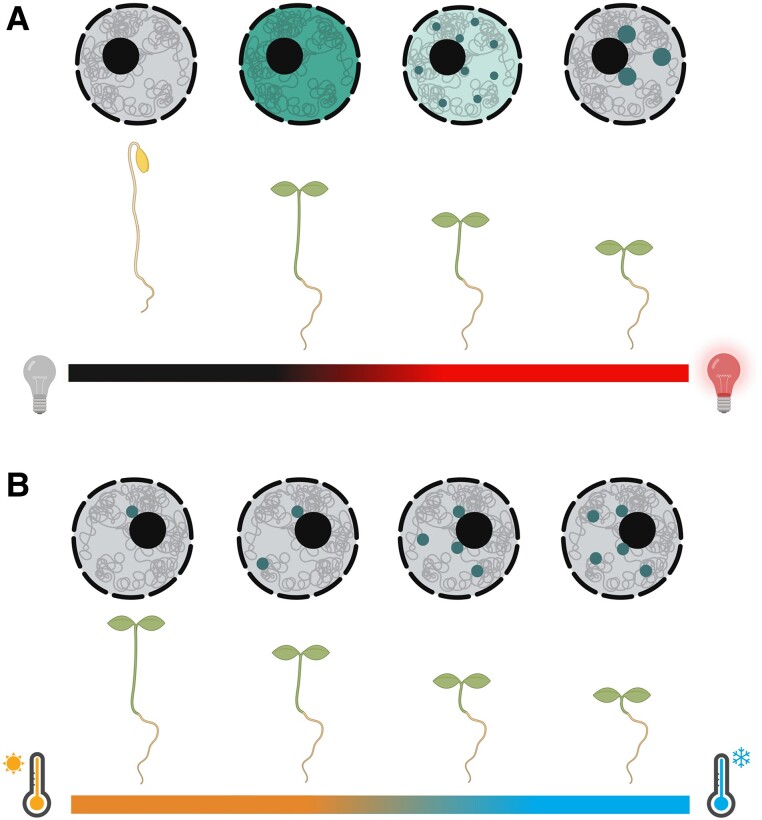Figure 2.
Schematic illustration of photobody behavior under different red light and temperature conditions. A) Under very dim red light, phyB translocates into the nucleus where it is evenly distributed. An increasing fluence rate leads to small photobodies that fuse and form bigger nuclear bodies with rising light intensities. B) In constant red light, increasing temperatures cause the disassembly of individual photobodies without disintegrating into small nuclear foci. Thermolabile photobodies are only present in lower temperatures, while the most thermostable photobody is located in the proximity of the nucleolus.

